Tanks-giving
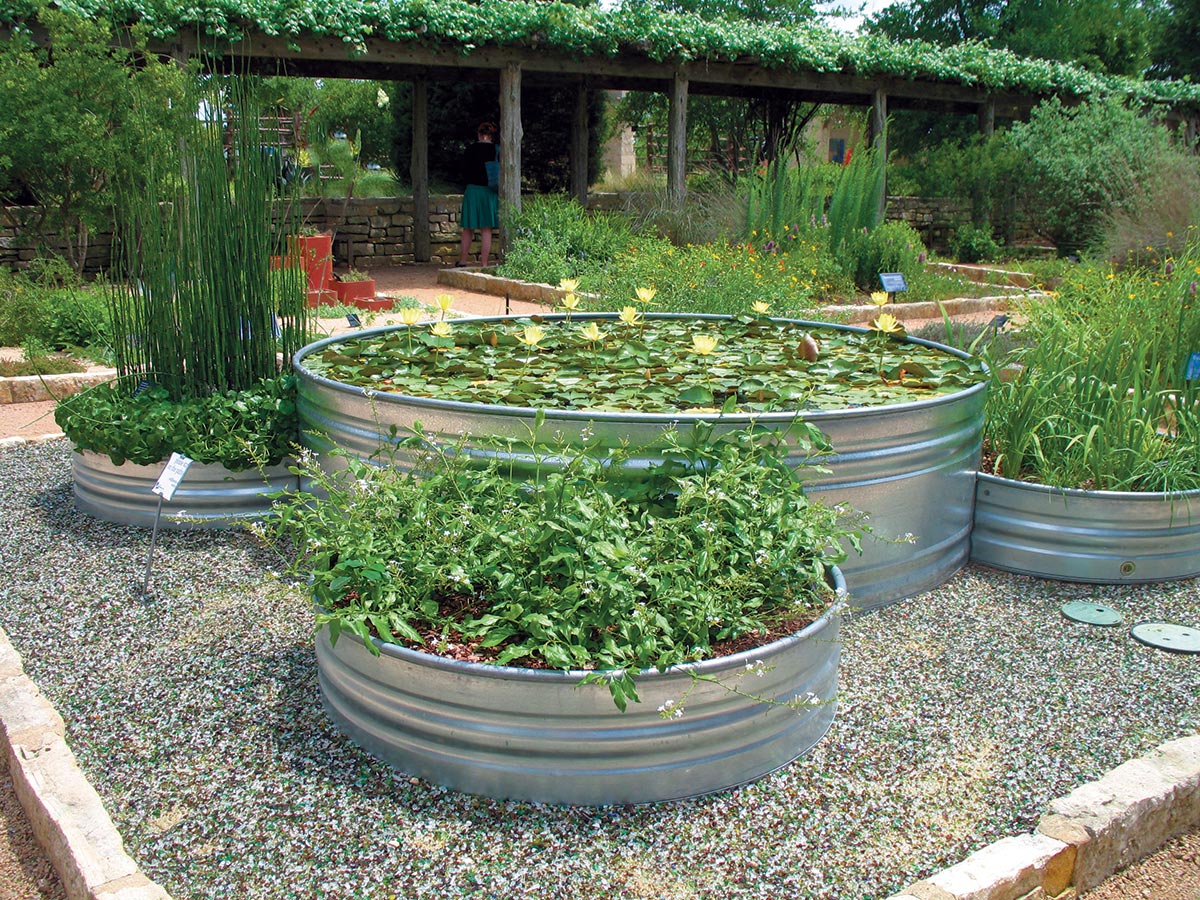
A stock tank water garden featuring yellow waterlily (Nymphaea mexicana) in bloom in the Center’s Theme Gardens. PHOTO Andrea DeLong-Amaya
Water is a precious commodity for all forms of life in our hot, dry climate. Creating a simple stock tank water garden can provide enjoyment for you and a valuable, supportive ecosystem for dragonflies, birds, frogs and other wildlife.
A galvanized metal stock tank is a common, simple base for such a garden. The Wildflower Center features one prominently at the entrance to the Theme Gardens, which may have something to do with their local popularity (or so we’d like to think!).
Follow these tips to create your own beautiful and resilient stock tank water garden:
PARK THAT TANK
First, find an ideal location for your tank, which can be set directly on the ground or partially buried. It’s possible to place it in considerable shade, but leaves falling from nearby trees are a maintenance headache. And a half day or more of sun supports a wider variety of flowers.
PICK YOUR PLANTS
For aesthetic and functional reasons, include a variety of plants that stand upright, trail or float, and a few that remain submerged (which typically add oxygen). Tall vegetation, such as horsetail (Equisetum hyemale), makes excellent perches for resplendent dragonflies, which provide captivating lessons on courtship and territorial behavior. Mat-forming or floating plants, such as water lilies (Nymphaea spp.) or coastal water-hyssop (Bacopa monnieri), provide good platforms where frogs, butterflies and other insects can rest, sun and drink from the edge (see below for more plant recommendations).
Ideally, vegetation should cover about 70% of the water’s surface during the summer. Providing a diversity of plant forms with staggered flowering periods will make the most interesting and ecologically balanced arrangements.
Maintenance is minimal: When necessary, remove algae and leaves by hand or with a net. Trim plants that get too large and cut back dead (or frozen) foliage, which is unsightly and can create anaerobic conditions in the water as it decomposes.
WATER WELL
If your water source is from a well or city, allow it to sit for a minimum of 24 hours before adding plants or fish. This lets well water that may be low in oxygen absorb it from the air. Pro tip: You can manually jumpstart this process with a sprinkler (droplets have greater surface area, which facilitates oxygen exchange). A day or two gives chlorine from municipal sources time to evaporate. Occasional partial water changes will generally reduce the amount of built-up toxin such as chloramine (added by some cities). If you have rainwater, you may add fish and plants immediately.
Make up for evaporation by keeping the water level constant. If you fill with city or well water, it is best to add only a few inches at a time, waiting a day between fillings.
Note: In some conditions, overly acidic water may react with galvanized metal, elevating zinc totoxic levels (several academic sources indicate that zinc levels of 0.05 ppm or less are generally safe for aquaculture). If this is a concern, consider sealing the tank with heavyweight epoxy or a fish-safe polymer.
GET FISHY
Fish are fun to watch and key to a successful pond; plus, a healthy population of mosquitofish (Gambusia affinis) or other hardy native species means fewer mosquitos — win-win! (Hill Country Water Gardens & Nursery is one local vendor.) When adding them, set their container into the water to allow the water temperatures to equalize. Slowly add small amounts of pond water to the container to acclimate fish to the new water chemistry. This process should take at least 15 minutes. It is not necessary to feed your fish and doing so may lead to water quality problems. Fish will eat mosquito larvae and other small aquatic insects as well as some algae.
Provide for other fauna by adding a flat rock sloping gently into the water. This can serve as a bathing area for birds; a rescue platform for creatures that can’t swim, such as toads; or a sunning or resting place for turtles and butterflies.
Lastly, sit back and enjoy the show!
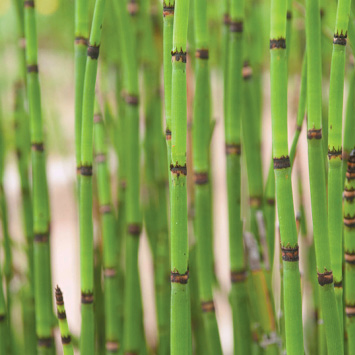
Horsetail (Equisetum hyemale)
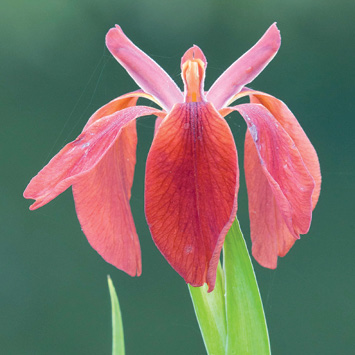
Copper iris (Iris fulva)
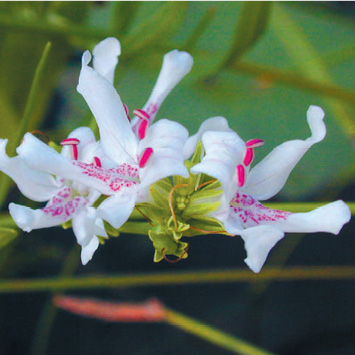
American water-willow (Justicia americana)
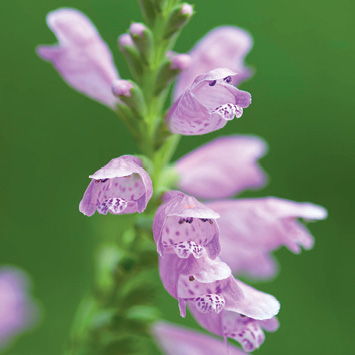
Marsh obedient plant (Physostegia intermedia)
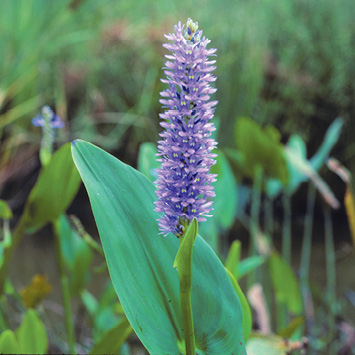
Pickerelweed (Pontederia cordata)
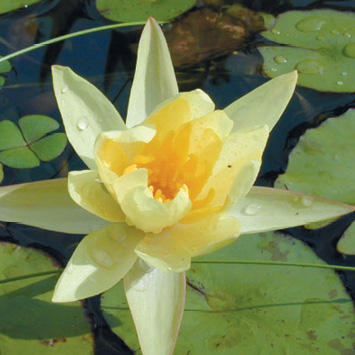
Yellow waterlily (Nymphaea mexicana)
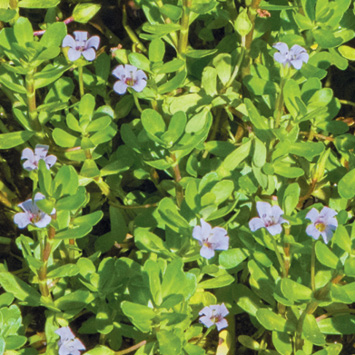
Coastal water-hyssop (Bacopa monnieri)
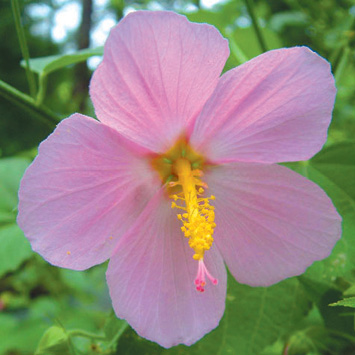
Virginia saltmarsh mallow (Kosteletzkya virginica)
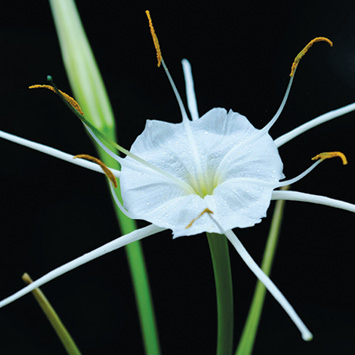
Texas spiderlily (Hymenocallis liriosme)
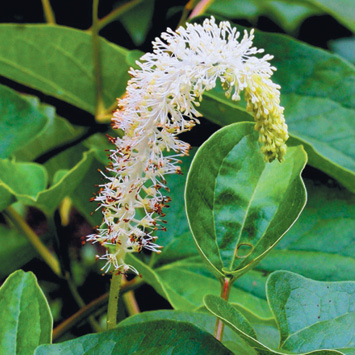
Lizard’s tail (Saururus cernuus)

